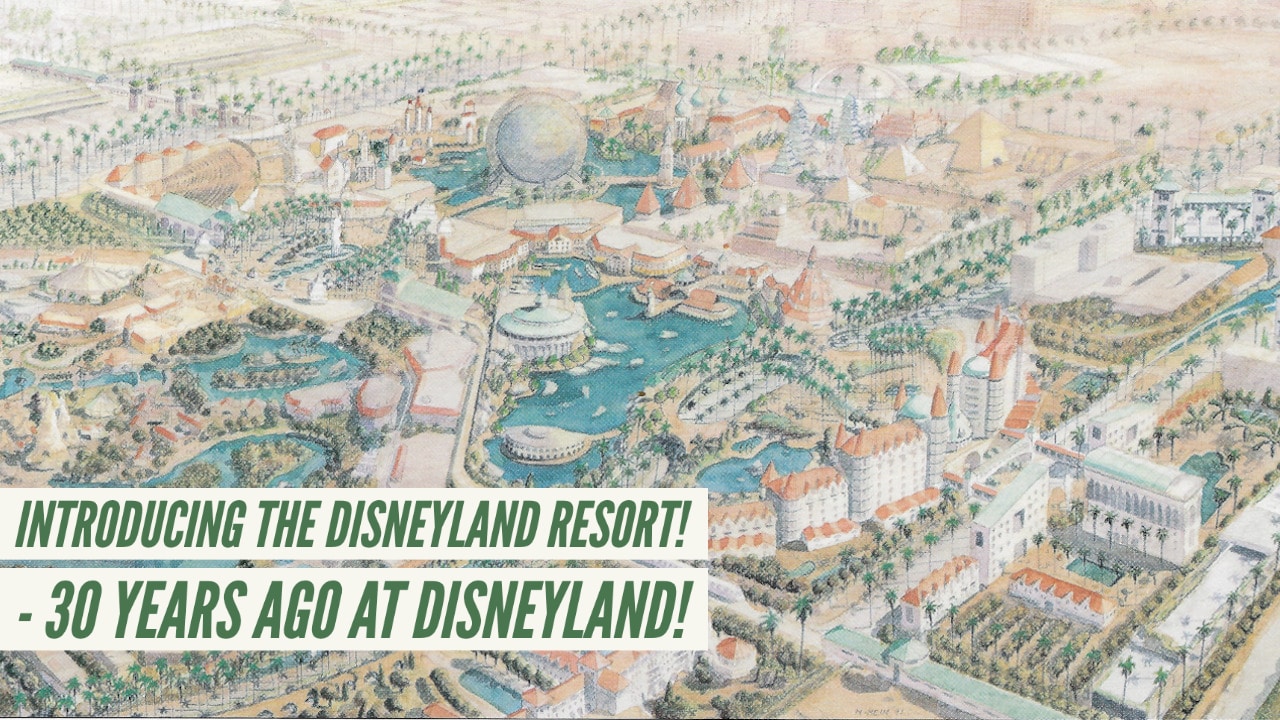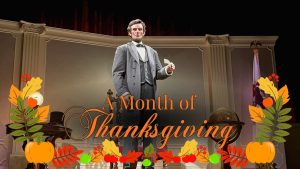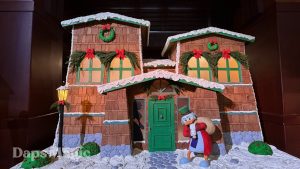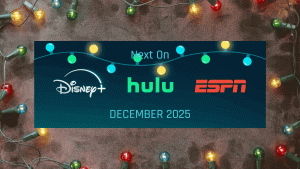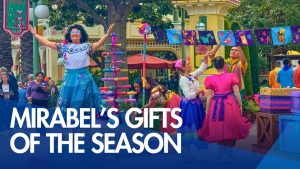When this blog began in January of 2020, I had no idea that taking “virtual visits” to Disneyland in the 1990s would become such an attractive idea. The “Disney Decade” began with soaring announcements and exciting expectations. For Disney fans the spring of 2021 is also marked with announcements and expectations. We can only hope they play out better than those of spring, 1991.
This will not, however, be another article delineating “what went wrong.” Hindsight is 20/20, as they say, but in 1991 we were looking only ahead, and had no reason to be filled with anything but the highest of hopes. Following the wildly popular 35th Birthday promotion, and the unveiling of the Disney Decade, everything seemed to be headed to good times for Disney fans.
Disneyland fans in particular were given a lot to rejoice over when the official announcement of the Disneyland Resort was made. There had been a lot of tantalizing information floating around among the members of fan clubs, readers of Disney newsletters, and members of “news groups” swapping scraps of information in newly organized “on line” forums. But in May of 1991 it all became suddenly real.

Giving weight to the announcement was a beautiful tri-fold brochure, printed in full color on heavy card stock. The watercolor image on the front was almost too much to take in all at once. Viewed from the northwest, it depicted the splendid new “21st Century” resort at full development. New hotels in the foreground fronted a tree-lined avenue. Shops and fine dining rimmed the edges of a sparkling lagoon. And facing the original Disneyland Park on the left of the image was a massive new park, with a giant globe as its centerpiece.
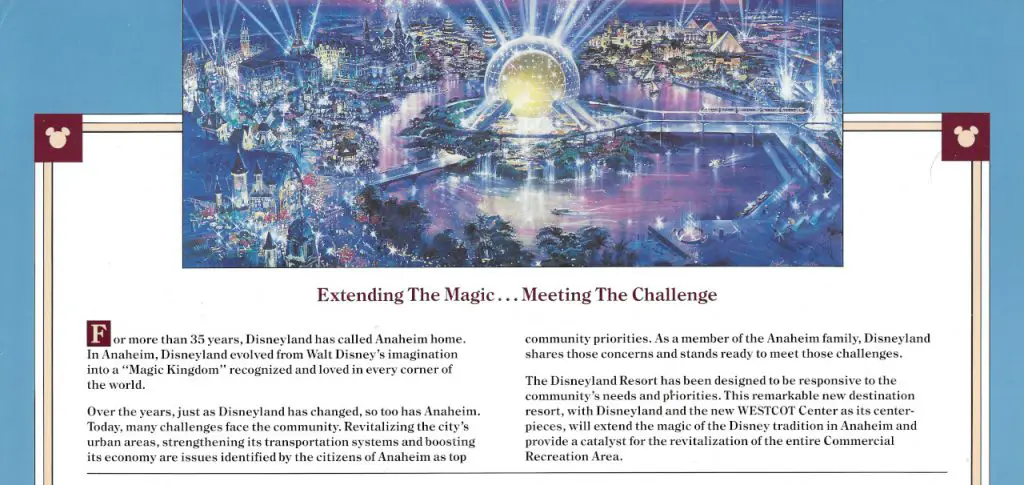
Opening the horizontally formatted brochure, one found a fuller rendering of the new park at the top of the page. Text boldly proclaimed, “Extending The Magic… Meeting The Challenge.” The rest of the first fold was text heavy, with vivid descriptions of various aspects of the new resort. Folding down that page revealed the best feature of the brochure—a fully scaled diagram of the entire resort, with labels and text identifying the features.

Number one was the Resort Hotel District. The Disneyland Hotel, with additions, would be joined by three new hotels, themed to some of California’s most iconic hostelries. At number two was Disneyland Center, a shopping, dining and entertainment district built around a six acre lake.
Disneyland was listed at number three, with the promise that it would be receiving exciting new attractions as part of the Disney Decade. Sharp eyed recipients of the brochure could see a number of new show buildings dotted around the perimeter of Disneyland.
Number four was Disneyland Plaza, a massive public square at the center of everything. Spectacular fountains were to be an important part of the plaza. “Garden District Improvements” were promised at number five. It appeared that Harbor Boulevard and surrounding streets would now be joined by pedestrian walkways, new streetscapes and lush plantings. Number six was Disneyland Drive, a new name for West Street between Ball Road and Katella. The street, with two gentle curves, was to be a tree lined grand boulevard, offering glamorous access to the hotels and Disneyland Center.
WESTCOT Center was the name given to the new park, at number seven. It was described as “a totally new theme park inspired by Walt Disney World’s EPCOT Center.” Looking at the plan view, it appeared that there would be a central lagoon surrounding the globe-shaped icon, with intricately themed international pavilions arrayed around the perimeter. Ringing the entire development were a series of the largest show buildings one had ever seen. There was even an amphitheater attached to the northeast corner of the park.
Anaheim’s existing Convention Center was number eight in the brochure. Nine was a promise of a new Internal Circulation network of pedestrian walkways, two different People Movers, and an expansion of the existing monorail, with two new stops added. Finally, at number ten was the “Transportation and Parking Management Plan,” promising that guests arriving by freeway would be able to directly enter the resort’s two new parking structures through access points at the north and south.
With so much text taking up the interior of the brochure, the back cover was given over to a set of four alluring renderings, with captions describing each.
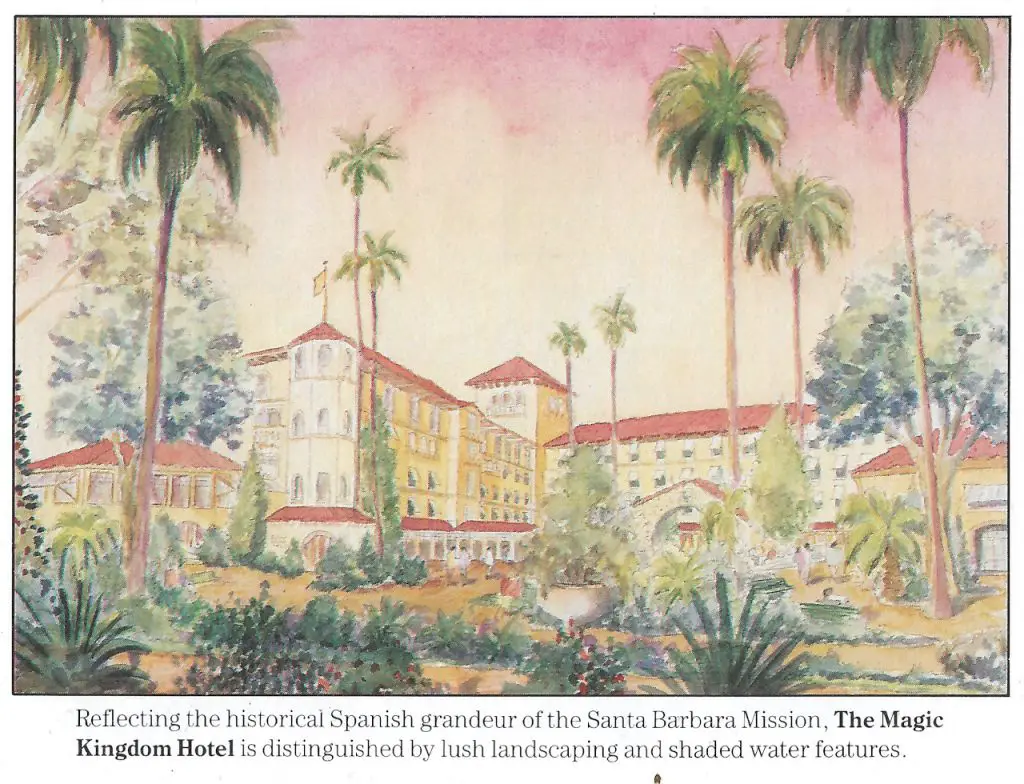

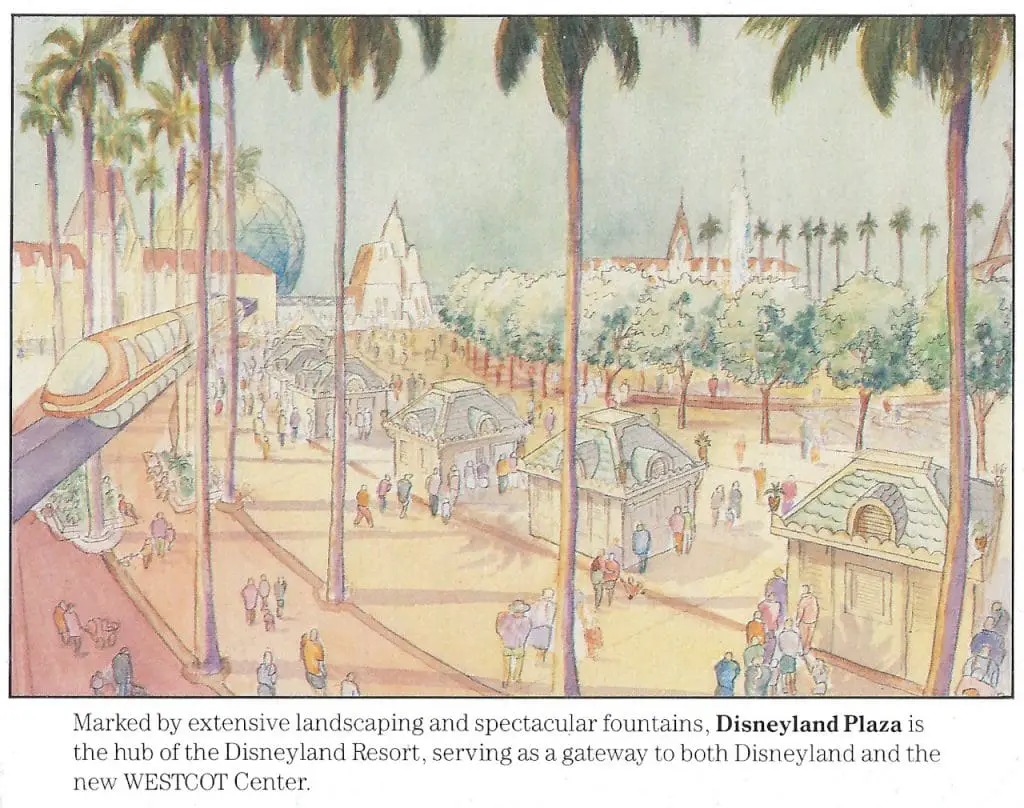
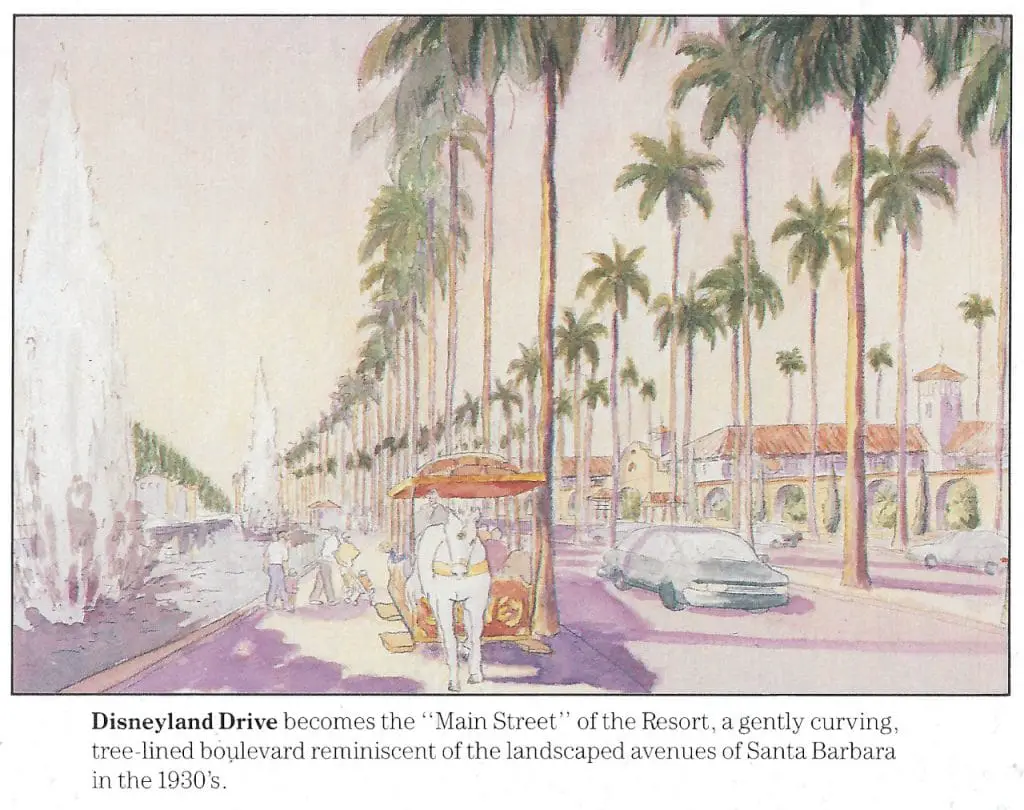
Anyone looking at this brochure would assume that it was only a matter of groundbreaking and construction that would bring all this splendor to glorious life. It must have seemed that way to Anaheim residents who received the brochure in the mail, with a cover letter that began with the cheery salutation, “Dear Neighbor.”
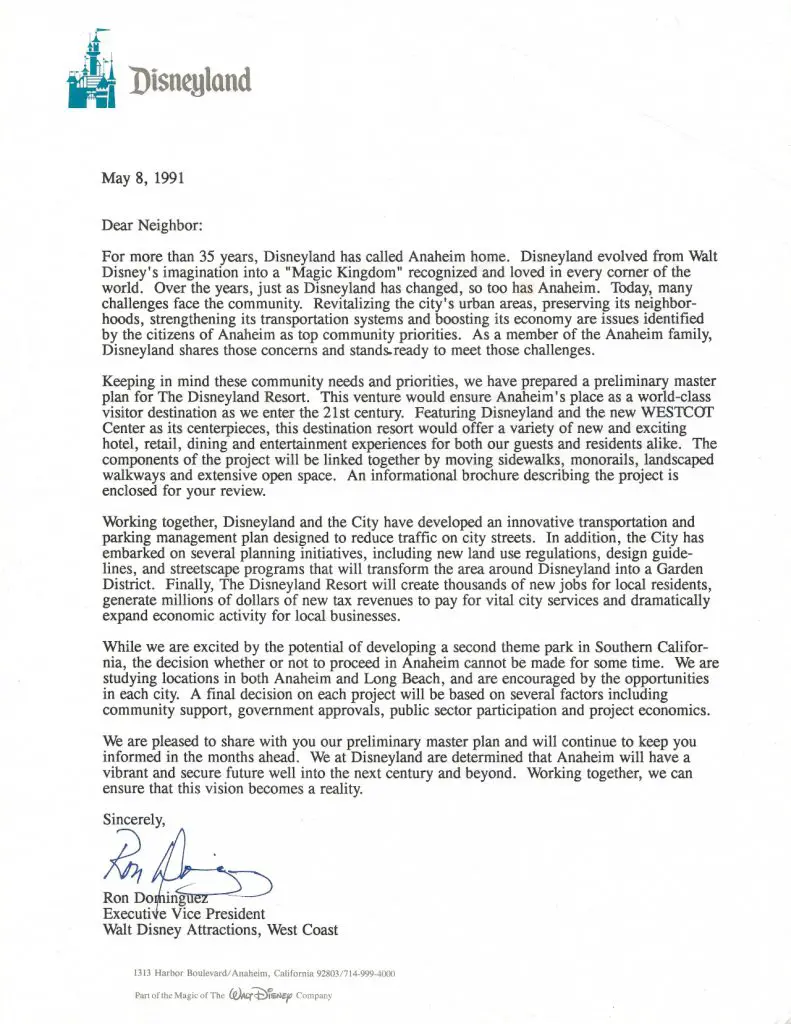
It was written over the signature of Ron Dominguez, Executive Vice President, Walt Disney Attractions, West Coast. The Dominguez family truly were neighbors, having sold their Anaheim farm back in 1954 to Walt Disney himself. The letter was written to reassure area residents that while Disneyland was getting bigger, plans were in place to create less stress on the community that surrounded it.
There was also an oddly false note, buried deeply in the note. The next-to-the-last paragraph stated, “While we are excited by the potential of developing a second theme park in Southern California, the decision whether or not to proceed in Anaheim cannot be made for some time.” It went on to explain that Disney was also looking at developing a new park in Long Beach, and that the decision would be made on the basis of “several factors,” including community support. (More on this in my July blog.)

Within a couple of months Disney added more dimension to their proposed Anaheim Resort with the release of a Draft Environmental Impact Report Summary. (It’s a draft of a report summary!) This text-heavy brochure was similar in format to the one that had been sent out in May, but was focused entirely on community impact. There were fewer alluring illustrations, although they did find space for two that were clearly intended to illustrate the aesthetic benefits of the new resort.
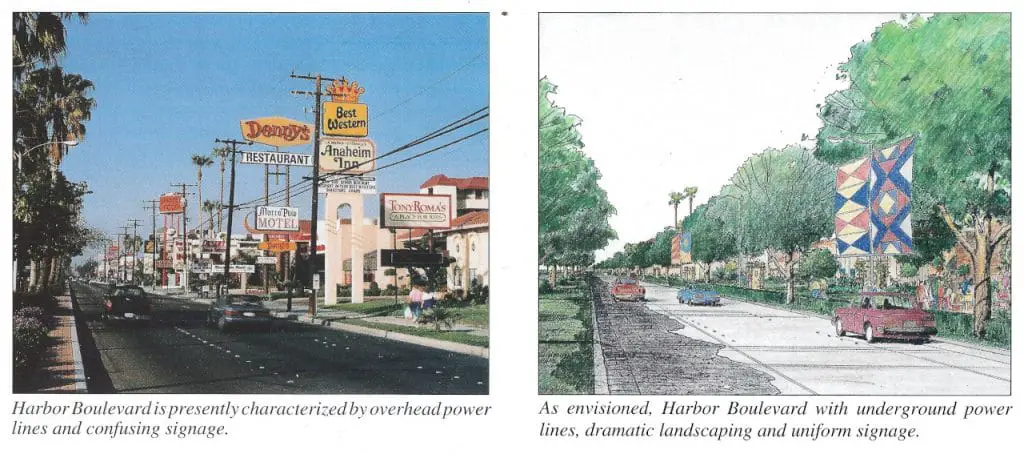
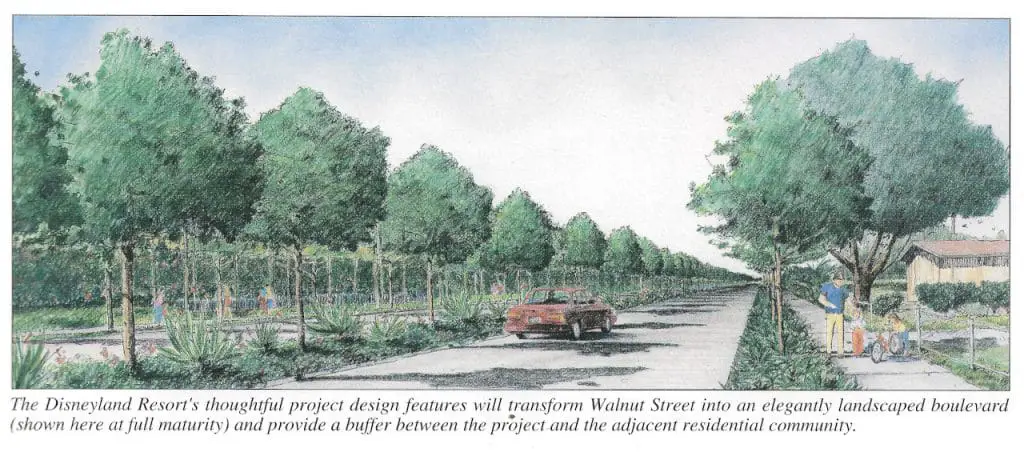

The later brochure also included a simplified diagram of the entire Disneyland Resort, with four specific areas clearly labeled: the Theme Park District (consisting of Disneyland and WESTCOT Center); the Hotel District (consisting of four hotels); the Parking District (parking structures to the east and west, with direct freeway access); and the Future Expansion District.
The Future Expansion District, also shown in the initial brochure, had already created some controversy. Anyone living in Anaheim at that time knew that the area overlaid by Disney’s planners was the Fujishige family strawberry farm. Disney had already purchased 23 acres adjacent to the farm that February, and had offered the Fujishige’s a 99-year lease on their 32 acres. The Fujishige’s had flatly turned them down.
There were further rumors that Disney’s overtures to Long Beach were really nothing more than a threat to get Anaheim to come to terms. In the existing fan clubs, newsletters, and new on line forums there were whispers that WESTCOT Center was already proving too expensive and unwieldy to build all at once.
But in May of 1991, all that was nothing more than speculation for naysayers and gloomy pessimists. For Disney theme park fans with a sunnier disposition and an optimistic outlook about the plans before them, things couldn’t have looked better. They could hardly wait to see how the Disney Decade would turn out.

